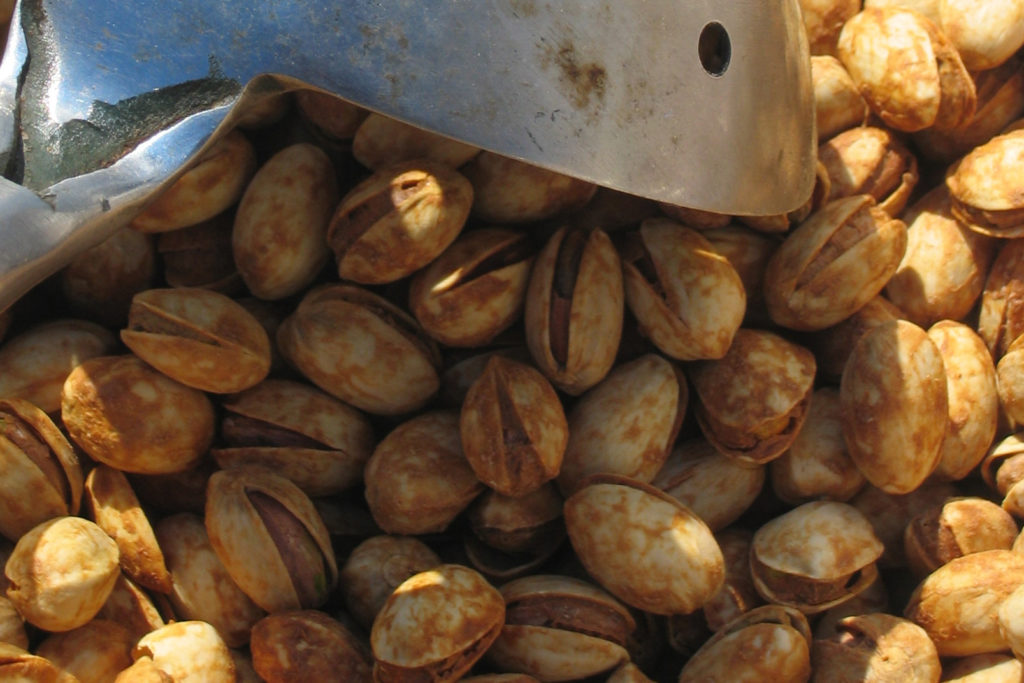Pistachios

Known for their unique green color, pistachios add a distinctive flavor to dishes both savory and sweet. Native to Iran and Iraq and dating back as early as 6750 BC, pistachios were first brought to the US in the early 1800s as a garden tree and grown commercially in California starting in 1929. California is the largest producer of pistachios with the Central Valley home to over 100,000 acres of orchards.
Pistachios trees must mature for seven years before producing their first crop. The most common varietal is called Kermen after the city of its origin. Pistachios tend to ripen in late summer and early autumn and the majority are harvested in September. Like many nuts, they need to be shaken from the trees. The pistachio is protected in a hard, whitish shell, and the seed has a mauve colored skin and light green flesh. When the nuts ripen, the shell changes from green to a yellowish/pinkish color and splits part way open.
Not only a flavorful addition to salads, entrées, and desserts, pistachios are also an incredibly healthy snack, high in antioxidants known to reduce LDL cholesterol and lower inflammation within the body. Plain pistachios have also been known to reduce body fat. Behavioral eating expert James Painter found that the pistachio nut actually tricks people into eating less, through a phenomenon he refers to as the Pistachio Principle. According to Painter, the pistachio’s high levels of healthy fats, which make it quite filling, in combination with the patience required to de-shell the nut, which slows down the snacking process, promote weight loss in dieters.
Pistachios add a unique flavor profile to otherwise traditional dishes and can be roasted with Brussels sprouts, blended into pesto, added into seasonal salads, sprinkled over roasted squash, and glazed and served over fruit.
